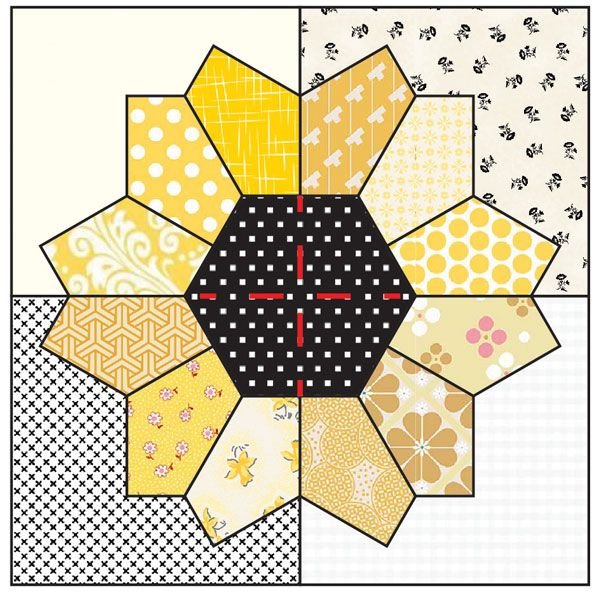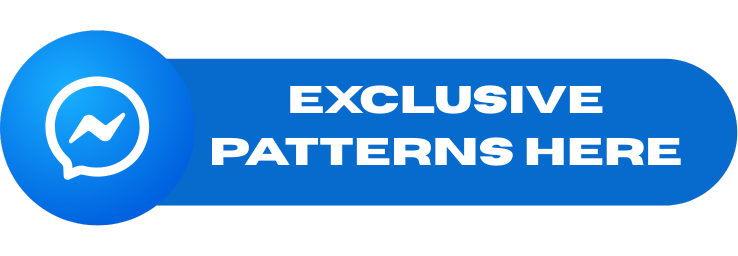The Sunflower Block – Pattern is a timeless quilting design that brings warmth, color, and a touch of nature into any textile project. Inspired by the bright and cheerful sunflower, this pattern has been a favorite among quilters for generations. Whether you’re a beginner or a seasoned fabric artist, learning to create the Sunflower Block – Pattern can transform your quilts into works of art.
This floral-themed design is both aesthetically pleasing and versatile. It can be used for everything from traditional quilts to modern wall hangings and decorative table runners. The Sunflower Block – Pattern adds charm and character with its radiant petals and circular symmetry. With some planning, color choice, and stitching technique, you can easily bring this iconic design to life in your own quilting projects.
In this article, we’ll guide you through everything you need to know about the Sunflower Block – Pattern. From its rich history and design variations to essential tools and assembly steps, this guide will help you build confidence and creativity. If you’re ready to master this beautiful floral motif, let’s dive in.

1. Understanding the Sunflower Block – Pattern
The Sunflower Block – Pattern is more than just a pretty face in the world of quilting. It has roots in traditional American quilting, where nature-inspired blocks often carried symbolic meaning. The sunflower, known for facing the sun and symbolizing loyalty and adoration, became a perfect muse for quilt makers.
This pattern typically features a round center and radiating petals, mimicking the real flower. Often arranged in a circular layout, the block showcases contrast and movement. Color choice plays a critical role in creating visual impact—yellows, oranges, and greens are most popular, although modern interpretations may use abstract or bold color schemes.
Many versions of the Sunflower Block – Pattern include curved piecing or appliqué techniques to form the intricate shapes. While these may appear complex, today’s quilters benefit from modern tools like rotary cutters, pre-printed templates, and fabric adhesives that make construction much easier.
You’ll often find this pattern in both classic hand-sewn quilts and contemporary machine-quilted pieces. The pattern’s adaptability to various quilting methods makes it accessible to all skill levels. Whether you’re hand-stitching for a rustic aesthetic or using a longarm machine for precision, the sunflower block fits right in.
The popularity of this pattern has grown due to its visual beauty and storytelling potential. Each block can be personalized to represent seasons, moods, or even loved ones. You can use different fabrics, embroidery, and embellishments to give your block its own unique signature.
Ultimately, learning how to create the Sunflower Block – Pattern opens the door to both traditional quilting heritage and limitless modern expression. It’s a satisfying block to master and a joy to showcase.
2. Tools and Materials Needed
Creating a Sunflower Block – Pattern requires the right tools to make the process smooth and accurate. Whether you’re hand quilting or using a sewing machine, preparation is key.
Start with fabric selection. You’ll need three main fabric types: a center circle (often dark brown or black), petal fabrics (usually in shades of yellow or orange), and a background fabric (light or contrasting tones work well). Cotton fabrics are preferred for their ease of use and durability.
Next, you’ll need a rotary cutter and self-healing cutting mat. These tools help you achieve clean and precise fabric cuts. If you’re working with curved pieces, consider using a small rotary cutter for better control.
Templates or stencils are essential for accurate piecing. You can find downloadable templates for the Sunflower Block – Pattern online or purchase pre-cut plastic templates for reuse. Some quilters even create their own templates using cardboard or freezer paper.
A good-quality sewing machine will save time and provide consistent stitches. Make sure to use a standard quilting needle and adjust the stitch length to suit your fabric. If you prefer hand stitching, use a fine quilting needle and strong thread for durability.
Pins, fabric glue, or basting spray can help secure your pieces in place before sewing. This is especially helpful for appliqué-style sunflower blocks where petals need to be arranged and stitched individually.
Lastly, always press your fabric before you begin. An iron and pressing board ensure that seams lie flat, making it easier to piece everything together cleanly and beautifully.
3. Step-by-Step Assembly Process
Now that your tools and materials are ready, it’s time to assemble the Sunflower Block – Pattern. Here’s a simplified guide to help you bring your sunflower to life.
Begin by preparing your templates. Trace and cut out the petal shapes, the center circle, and any additional leaf or stem elements. Make sure all your templates are symmetrical and proportional to the block size you’ve chosen.
Cut your fabrics using the templates. Most sunflower blocks require 8 to 16 petal pieces. Accuracy is key—use a rotary cutter and ruler to keep lines straight and consistent. This step sets the foundation for a balanced final block.
Lay out the petals in a circular shape around the center. You can pin or glue them to the background fabric before stitching. Make adjustments as needed to ensure equal spacing and smooth alignment.
Next, attach the center circle. This can be done through needle-turn appliqué, machine stitching, or raw edge fusible appliqué. The method you choose will depend on your skill level and desired finish.
Once the pieces are secure, sew the petals down using a small zigzag stitch or a blanket stitch. Take your time to keep the stitches even and neat. If hand stitching, use tiny hidden stitches for a clean finish.
Finish by pressing the entire block with a warm iron. Check the back for loose threads and trim as necessary. At this stage, your Sunflower Block – Pattern is ready to be joined with other blocks or used as a stand-alone feature.
4. Creative Variations and Uses
One of the best aspects of the Sunflower Block – Pattern is its creative flexibility. There are countless ways to customize this block for different styles, seasons, and project types.
Try experimenting with color. While yellow petals are traditional, using shades like red, burgundy, or even blue can give your sunflower a completely new look. Color gradients also add depth and visual interest.
Change the block size to suit your project. Smaller blocks work great for coasters or placemats, while larger versions make stunning pillow covers, wall hangings, or quilt centerpieces. You can scale up or down easily by adjusting your templates.
Mix and match techniques. Combine appliqué with piecing, or add embroidery to the center of the sunflower for a textured finish. Beads, sequins, or hand-quilting lines can further enhance the design.
Use unconventional fabrics like batiks, flannels, or even upcycled denim to give your sunflower block a rustic or boho aesthetic. Mixing textures creates tactile interest that adds richness to your finished piece.
Repeat the Sunflower Block – Pattern in a quilt to create a field of sunflowers. Alternate block colors or orientations to produce dynamic movement across the quilt top. This is a great way to tell a story through fabric.
Finally, consider seasonal adaptations. Use Halloween prints for a spooky sunflower or Christmas colors for a festive version. The sunflower’s simple structure makes it easy to reinterpret throughout the year.
Frequently Asked Questions (FAQ)
What is the Sunflower Block – Pattern used for?
This pattern is commonly used in quilts, wall hangings, table runners, and decorative fabric crafts. It brings a touch of nature and bright, cheerful energy to any project.
Is the Sunflower Block – Pattern suitable for beginners?
Yes, especially when using simplified methods like raw-edge appliqué or pre-cut templates. Beginners may find curved piecing challenging at first but can practice with basic shapes.
How many petals are in a typical sunflower block?
Most sunflower blocks include between 8 to 16 petals, depending on the desired level of detail and the size of the block.
Can I use scraps for this pattern?
Absolutely. The Sunflower Block – Pattern is ideal for using up fabric scraps, especially for the petals. It’s a great stash-busting project.
Do I need a sewing machine to make a sunflower block?
No. While a machine speeds up the process, you can hand-stitch the entire block using traditional quilting methods.
Where can I find templates for this pattern?
You can download free templates from quilting blogs, purchase pattern books, or create your own using design software or drawing tools.
Conclusion
The Sunflower Block – Pattern is a joyful and versatile design that continues to captivate quilters around the world. Whether you’re creating a full quilt, a decorative pillow, or a one-of-a-kind wall hanging, mastering this block adds a powerful visual element to your creations. With the right tools, techniques, and a touch of creativity, you can bring your sunflower to life in fabric.
We hope this guide helped you understand how to design, assemble, and customize your own Sunflower Block – Pattern. If you’ve made one already or plan to try soon, please leave your honest opinion and share any suggestions you might have for others in the comments. We’d love to hear your thoughts and see your sunflower creations!

